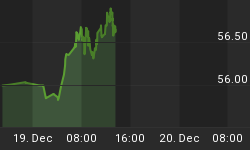The developed nations are over-extended, their debt levels are ballooning and their governments are creating copious amounts of money. Put simply, most industrialised nations are now caught between a rock and a hard place.
After years of excesses, the developed world is slowly beginning to realise that you cannot continue to live beyond your means and spend your way to prosperity.
Today, US national debt stands just north of US$12 trillion, its fiscal deficit for this year alone should come in around US$1.6 trillion and the nation faces mind-boggling deficits for as far as the eye can see. Furthermore, demand for US government debt has begun to wane and this implies that the Federal Reserve will have to resort to creating even more money over the following years.
Make no mistake; the US cannot afford higher interest-rates and in order to keep a lid on the government bond yields, we are convinced that the Federal Reserve will resort to debt monetisation. In other words, the central bank will create new dollars in order to fund the deficits. Needless to say, this money-creation will be extremely dilutive and end up undermining the viability of the world's reserve currency.
If our assessment is correct, within the course of this decade, the interest-payments on the existing government debt will become so large that the US Treasury will need to issue new debt just so that it can keep paying interest on its outstanding debt. When that happens, you be sure that foreigners will not be eager buyers of US government debt. Therefore, the Federal Reserve will have to create additional money, just to keep the Ponzi-scheme going. And when all else fails, the US will simply debase its currency, thereby repaying its creditors in significantly depreciated dollars.
Although our prognosis may sound far-fetched, we want to remind you that throughout history, currency debasement has been the norm rather than the exception. Let us put it simply, the US is now left with three options:
-
Sovereign default (unimaginable)
-
Severe economic contraction (unlikely)
-
Currency debasement (most probable)
For the risk of being thrown out of power, the policymakers will certainly not admit to an outright sovereign default. For such an event would cause a revolution within the US and shock-waves throughout the economy. So, this drastic measure can be ruled out.
Next, we are also sure that policymakers in the US will not swallow the bitter pill andpursue sound monetary policies, so this option is also out of the question.
Finally, it is obvious to us that policymakers in the US will have no hesitation in opting for the inflation pill. By diluting the supply of money and eventually debasing their currency, policymakers in the US will create the illusion of prosperity via rising nominal asset prices.
Unfortunately, severe monetary inflation and currency debasement is likely to occur not only in the US but in most developed nations. Remember, a host of nations such as Japan, Ireland, Italy, Spain, Greece, Portugal and the UK are also swimming in an ocean of debt. Moreover, their populations are ageing and this will put further pressure on these countries' finances.
So, in this 'new era', whereby most of the 'advanced' economies are on the edge of bankruptcy, various paper currencies will come under close scrutiny. Now, if all these rogue nations decide to inflate and debase, then this basket of paper money will depreciate against hard assets such as gold. It is worth noting that during times of economic uncertainty when confidence in financial assets is low, gold always assumes the role of a currency. This has happened since the beginning of time and history will probably repeat again. When investors try and protect the purchasing power of their savings and gold is re-monetised, its price will sky-rocket.
Another reason why you should own some gold is the looming inflation threat. Remember, in an effort to prop-up the banking system, central banks in most nations pumped trillions of dollars into the economy and this newly created money is now sitting as excess reserves. So far, these excess bank reserves have not permeated through the economy, but when they do, prices will surge and gold will serve as a store of value.
Although currency debasement and inflation are good enough reasons to hold on to some gold, the biggest bullish factor is that real (inflation-adjusted) interest-rates are now negative in most nations. Thanks to the central banks' reflationary efforts, short-term interest rates today are way below the official inflation rate. Therefore, holding cash is now a loss-making proposition and thus, seasoned investors are turning to gold.
On the supply side of the equation, it is worth noting that central-banks have now become net buyers of gold. After years of selling bullion, the public sector has done an about face and this is very positive for the yellow metal. Currently, the creditor nations in Asia are sitting on mountains of foreign exchange reserves and in an effort to diversify out of paper, they will surely add to their gold holdings. Recently, we have seen China and India buy huge amounts of gold and you can bet your bottom dollar that they will continue to add to their tiny positions.
In summary, we maintain our view that gold is in a secular bull-market and every investor should own some bullion as an insurance policy. At present, gold mining stocks are undervalued relative to gold bullion, so those seeking extra leverage should consider investing in dominant gold producers. Finally, in our view, the high cost South-African gold producers which do not hedge their production offer the maximum leverage to gold. And at current prices, these companies are being given away.















